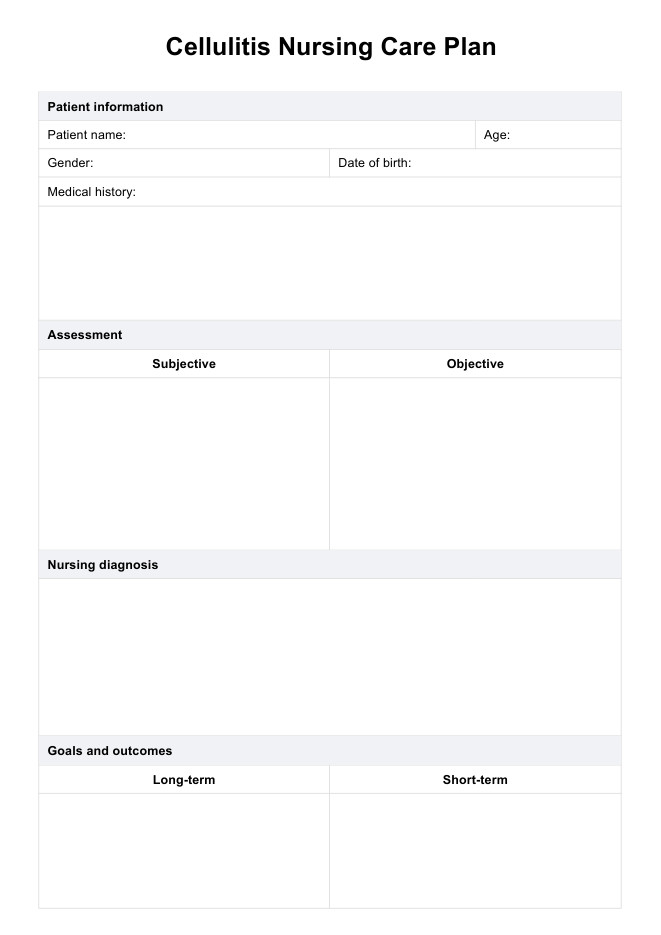The nursing care plan for cellulitis patients typically includes assessing the affected area, monitoring vital signs, and ensuring proper skin hygiene. Nurses should educate patients about the importance of keeping the area clean and dry and adhering to prescribed antibiotic treatments. Pain management, elevation of the affected limb, and regular follow-up appointments are also crucial components to prevent complications and promote healing.

Cellulitis Nursing Care Plan Template
Enhance patient care with our Cellulitis Nursing Care Plan template. Improve safety, streamline documentation, and boost outcomes for cellulitis management.
Cellulitis Nursing Care Plan Template Template
Commonly asked questions
Care management of cellulitis involves a multifaceted approach, including prompt diagnosis and initiation of appropriate antibiotic therapy. Patients should be educated on recognizing signs of worsening infection and the importance of compliance with treatment plans. Regular monitoring of the infection's progression, managing comorbid conditions, and ensuring follow-up care are vital to prevent recurrence and complications.
Assessment findings for cellulitis typically include localized redness, swelling, warmth, and tenderness in the affected area. Patients may present with systemic symptoms such as fever, chills, and malaise. In some cases, there may be the presence of lymphangitis or lymphadenopathy. A thorough assessment helps differentiate cellulitis from other skin infections and guides appropriate treatment.
EHR and practice management software
Get started for free
*No credit card required
Free
$0/usd
Unlimited clients
Telehealth
1GB of storage
Client portal text
Automated billing and online payments











